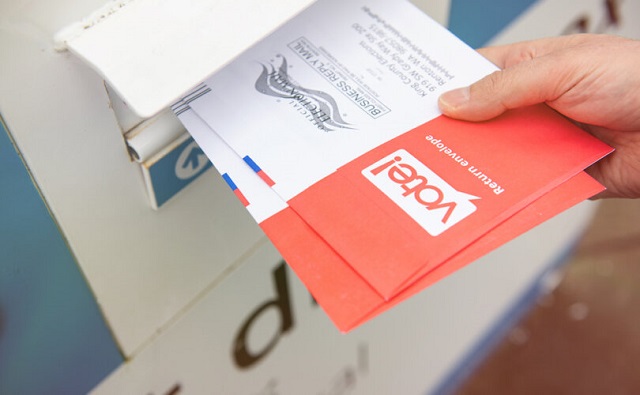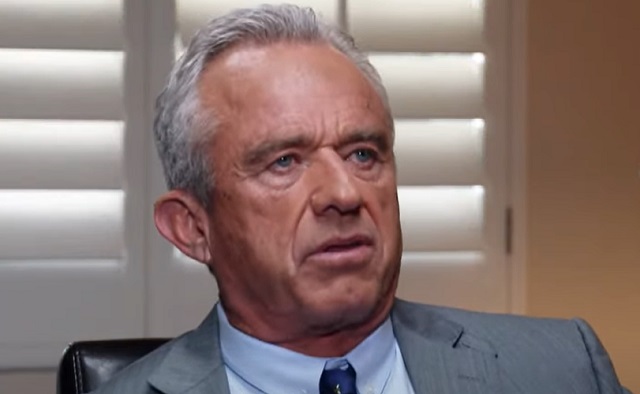Canadian Energy Centre
Business leaders blast Ottawa’s ‘unnecessary and unacceptable’ oil and gas emissions cap

From the Canadian Energy Centre
The federal government is proceeding with its plans to cap emissions from the oil and gas industry in a move business leaders say will ultimately hurt Indigenous communities and everyday Canadians.
The Business Council of Canada called the cap part of a “full-on charge against the oil and gas sector.”
The government announced on December 7 that it will implement measures to cap oil and gas emissions in 2030 at 35 to 38 percent below 2019 levels. A similar cap has not been announced for any other industry.
“It all seems punitive and short-sighted,” wrote Business Council of Canada vice-president Michael Gullo and Theo Argitis, managing director of Compass Rose Group.
A cap on production
They don’t put much stock into the government’s claims that the cap is not intended to limit Canada’s oil and gas production.
“That’s semantics. To work, a cap would ultimately need to be severe enough to curtail production if needed, and that would have significant economic consequences,” Gullo and Argitis said, warning of a “direct and immediate” loss of income for Canada’s economy.
“There would be significant indirect costs as well, incurred by every household and business across the nation because Canada relies on income generated by oil and gas companies—totaling $270 billion in 2022 alone—to support social programs like health care, education, and infrastructure,” they wrote.
Already on the path to net zero
On the world’s current trajectory, oil and gas will still account for 46 per cent of world energy needs in 2050, down only moderately from 51 per cent in 2022, according to the International Energy Agency.
Industry leaders argue that Canada’s oil and gas producers are already on the path to net zero emissions without the need for the cap.
According to Environment and Climate Change Canada’s latest report to the United Nations, emissions from so-called “conventional” (non-oil sands) production declined to 26 megatonnes in 2021, from 34 megatonnes in 2019.
Producers in Alberta have already reduced total methane emissions by 45 per cent compared to 2014, hitting the target three years ahead of schedule.
Oil sands emissions did not increase last year despite production growth, and total emissions are expected to start going down before 2025, according to S&P Global.
“Imposing an emissions cap on Canada’s oil and gas producers, who are already achieving significant emissions reductions as shown in the federal government’s own data, is unnecessary and unacceptable,” the Explorers and Producers Association of Canada said in a statement.
A cap on Indigenous opportunity
The Indigenous Resource Network (IRN) – which advocates for Indigenous participation in resource projects – said the cap would be “devastating” for Indigenous communities.
“A pathway to self-determination is being achieved through the ownership of oil and gas projects and involvement in the sector,” said IRN executive director John Desjarlais.
“This would result in a cap on Indigenous opportunity in the oil and gas sector.”
Desjarlais said the IRN is seeking an exemption from the cap for Indigenous communities who are engaged in oil and gas development.
He said the proposed cap directly contradicts the government’s promises on reconciliation and its support for the United Nations Declaration on the Rights of Indigenous People.
Counter–approach to the United States
The approach of capping emissions runs counter to the incentive-based approach being pursued in the United States, the Canadian Association of Energy Contractors (CAOEC) said in a statement.
“There, the Inflation Reduction Act has attracted capital and accelerated low-carbon technology and innovation in the energy sector at the expense of Canadian businesses and workers,” the CAOEC said.
Ottawa has yet to finalize announced investment tax credits to support clean technologies like hydrogen production and carbon capture, utilization and storage (CCUS), the Business Council of Canada noted.
“We have engaged the federal government in good faith over the past two years and have asked them to partner with us to accelerate the deployment of carbon abatement technology. As of today, we have received no support from this government,” said CAOEC president Mark Scholz.
“Stop working against us and start working with us.”
Final regulations on the proposed emissions cap are expected in 2025.
Alberta
Canada’s advantage as the world’s demand for plastic continues to grow

From the Canadian Energy Centre
By Will Gibson
‘The demand for plastics reflects how essential they are in our lives’
From the clothes on your back to the containers for household products to the pipes and insulation in your home, plastics are interwoven into the fabric of day-to-day life for most Canadians.
And that reliance is projected to grow both in Canada and around the world in the next three decades
The Global Plastics Outlook, published by the Paris-based Organization for Economic Co-operation and Development (OECD), forecasts the use of plastics globally will nearly triple by 2060, driven by economic and population growth.
The use of plastics is projected to double in OECD countries like Canada, the United States and European nations, but the largest increases will take place in Asia and Africa.
“The demand for plastics reflects how essential they are in our lives, whether it is packaging, textiles, building materials or medical equipment,” says Christa Seaman, vice-president, plastics with the Chemical Industry Association of Canada (CIAC), which represents Canada’s plastics producers.
She says as countries look to meet climate and sustainability goals, demand for plastic will grow.
“Plastics in the market today demonstrate their value to our society. Plastics are used to make critical components for solar panels and wind turbines. But they also can play a role in reducing weight in transportation or in ensuring goods that are transported have less weight in their packaging or in their products.”
Canada produces about $35 billion worth of plastic resin and plastic products per year, or over five per cent of Canadian manufacturing sales, according to a 2019 report published by the federal government.
Seaman says Canadian plastic producers have competitive advantages that position them to grow as demand rises at home and abroad. In Alberta, a key opportunity is the abundant supply of natural gas used to make plastic resin.
“As industry and consumer expectations shift for production to reduce emissions, Canada, and particularly Alberta, are extremely well placed to meet increased demand thanks to its supply of low-carbon feedstock. Going forward, production with less emissions is going to be important for companies,” Seaman says.
“You can see that with Dow Chemical’s decision to spend $8.8 billion on a net zero facility in Alberta.”
While modern life would not be possible without plastics, the CIAC says there needs to be better post-use management of plastic products including advanced recycling, or a so-called “circular economy” where plastics are seen as a resource or feedstock for new products, not a waste.
Some companies have already started making significant investments to generate recyclable plastics.
For example, Inter Pipeline Ltd.’s $4.3 billion Heartland Petrochemical Complex near Edmonton started operating in 2023. It produces a recyclable plastic called polypropylene from propane, with 65 per cent lower emissions than the global average thanks to the facility’s integrated design.
Achieving a circular economy – where 90 per cent of post-consumer plastic waste is diverted or recycled – would benefit Canada’s economy, according to the CIAC.
A Deloitte study, commissioned by Environment & Climate Change Canada, estimated diverting or reusing 90 per cent of post-consumer plastic waste by 2030 will save $500 million annually while creating 42,000 direct and indirect jobs. It would also cut Canada’s annual CO2 emissions by 1.8 megatonnes.
Right now, about 85 per cent of plastics end up in Canada’s landfills. To reach the 90 per cent diversion rate, Seaman says Canada must improve its infrastructure to collect and process the plastic waste currently being landfilled.
But she also says the industry rather than municipalities need to take responsibility for recycling plastic waste.
“This concept is referred to as extended producer responsibility. Municipalities have the responsibility for managing recycling within a waste management system. Given the competing costs and priorities, they don’t have the incentive to invest into recycling infrastructure when landfill space was the most cost-effective solution for them,” she says.
“Putting that responsibility on the producers who put the products on the market makes the most sense…The industry is adapting, and we hope government policy will recognize this opportunity for Canada to meet our climate goals while growing our economy.”
Business
Decarbonization deal opens new chapter in Alberta-Japan relationship

From the Canadian Energy Centre
By Will Gibson
Agreement represents a homecoming for JAPEX, which first started work in the Alberta oil sands in 1978
A new agreement that will see Japan Petroleum Exploration Company (JAPEX) invest in decarbonization opportunities in Alberta made history while also being rooted in the past, in the eyes of Gary Mar.
JAPEX is seeking to develop projects in carbon capture and storage (CCS), hydrogen and bioenergy. It’s part of the company’s JAPEX2050 strategy toward carbon neutrality.
“This new endeavour is a great opportunity that demonstrates the world is changing but the relationships endure,” says Mar, the province’s former trade envoy to Asia and the current CEO of the Canada West Foundation.
“Alberta’s very first international office was opened in Tokyo in 1981. And we have built a tremendous soft infrastructure that includes partnerships between a dozen Alberta and Japanese universities.”
For JAPEX, the agreement represents something of a homecoming for the company that first started work in the Alberta oil sands in 1978 and operated one of the first in situ (or drilled) oil projects for nearly two decades before selling its stake in 2018.
“We are now aiming to come back to Alberta and contribute to its decarbonization,” JAPEX president of overseas business Tomomi Yamada said in a statement.
Mar says the memorandum of understanding signed this March between JAPEX and the crown corporation Invest Alberta stems from a strong relationship built over decades.
“You can’t be considered a reliable partner for a new venture if you haven’t been a reliable partner for decades in the past,” says Mar.
“Economies change and world’s needs change but strong relationships are important factor in whom you do business with.”
Alberta’s established CCS infrastructure has already attracted new investment, including Air Products’ $1.6-billion net zero hydrogen complex and Dow Chemicals’ $8.8-billion net zero petrochemical complex.
Mar sees JAPEX’s deal with Invest Alberta opening a whole new market of potential carbon neutral investors in the Pacific Rim.
“When other countries who are partners in the Trans-Pacific Partnership (TPP) see JAPEX invest in this decarbonization opportunities and net zero projects in Alberta, it will send a very clear signal to others in the TPP about the potential,” Mar says.
“This deal may come from the decades-long relationship between Alberta and Japan but can also serve as a signpost for decades to come.”
-

 espionage1 day ago
espionage1 day agoOne in five mail-in voters admitted to committing voter fraud during 2020 election: Rasmussen poll
-

 Business23 hours ago
Business23 hours agoHonda deal latest episode of corporate welfare in Ontario
-

 Automotive16 hours ago
Automotive16 hours agoThe EV ‘Bloodbath’ Arrives Early
-

 COVID-192 days ago
COVID-192 days agoTrudeau gov’t has paid out over $500k to employees denied COVID vaccine mandate exemptions
-

 International2 days ago
International2 days agoRFK Jr tells EWTN: Politicization of the CIA, FBI, Secret Service under Biden is ‘very troubling’
-

 CBDC Central Bank Digital Currency8 hours ago
CBDC Central Bank Digital Currency8 hours agoA Fed-Controlled Digital Dollar Could Mean The End Of Freedom
-

 Brownstone Institute6 hours ago
Brownstone Institute6 hours agoThe Numbers Favour Our Side
-

 Addictions2 days ago
Addictions2 days agoWhy can’t we just say no?








